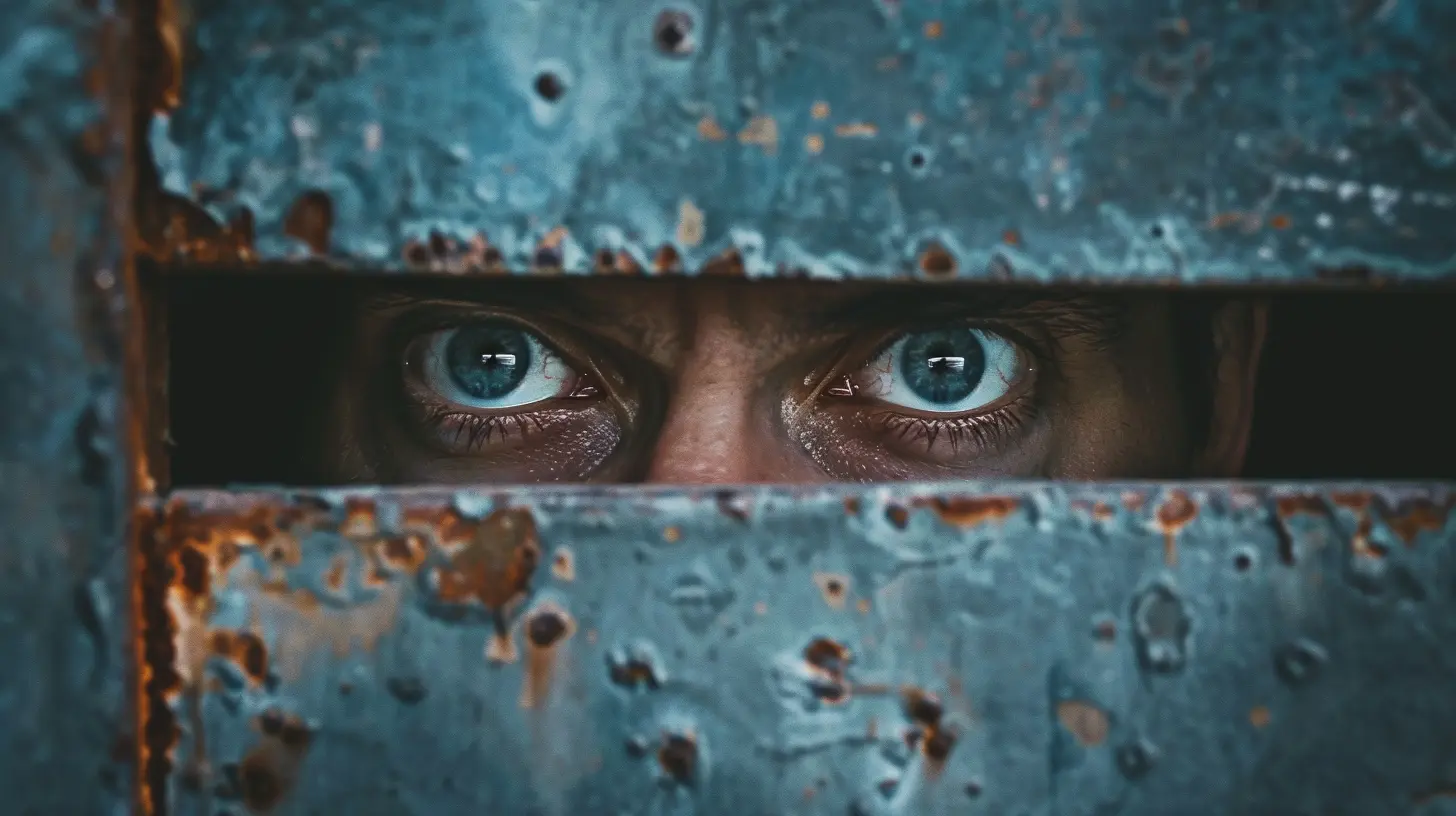When Fear Becomes Phobia: Understanding the Threshold
3 August 2025
Let’s be honest: fear is kind of like that unwanted houseguest who shows up whenever life throws a curveball. Your heart pounds, palms get sweaty, your brain’s going 100 mph—yep, we’ve all been there. But have you ever wondered when that natural reaction to danger crosses the line into phobia territory? You know, when fear morphs into something that feels more like a full-blown monster rather than a simple alert system?
Well, buckle up because we’re diving headfirst into the quirky and curious realm of fear vs. phobia. If you’ve ever side-eyed a spider and then jumped onto a chair like it's a scene from a cartoon—or refused to attend a party because there might be balloons (yes, that’s a real phobia)—then this ride’s for you.
Fear: Nature’s Internal Alarm Clock
Let’s start at the beginning.Fear is totally normal. It’s built into our DNA. Think of it as your brain’s internal "Uh-oh!" system. You're walking in a forest, you hear a growl—your brain shouts, “RUN!” and suddenly your body’s in survival mode. That’s fear doing exactly what it’s supposed to do. Thanks, brain!
It triggers something called the "fight or flight" response, giving you a shot of adrenaline that helps you either face the threat or hightail it out of there. Super useful if you’re being chased by a bear (less so during your morning presentation at work, but we’ll get to that).
So... What Makes Fear Handy?
- Protects you from danger- Keeps you alert
- Improves reaction time
- Boosts physical performance in stressful situations
But here’s the kicker—fear is supposed to be temporary. Like that awkward conversation with your neighbor. It shows up, makes your stomach flip, and then poof—gone.
When Things Go Sideways: Enter the Phobia
Okay, now let’s talk about the moment fear overstays its welcome and transforms into a phobia. Picture fear as a houseguest. At first, it’s okay. But then it takes your spot on the couch, eats all your snacks, and refuses to leave. That’s a phobia.Phobias are like fear’s dramatic twin—the one who takes everything way too personally.
What Exactly Is a Phobia?
A phobia is an intense, irrational fear of something that poses little or no actual danger. And when I say intense, I mean full-on mental gymnastics just to avoid the thing. People with phobias aren’t just "a little scared." They might rearrange their entire life just to dodge the source of fear.We’re talking about:
- Avoiding elevators and choosing 12 flights of stairs daily
- Saying no to promotions that require flying
- Refusing vaccines because of needle phobia
Sound familiar?
The Fear-to-Phobia Spectrum: Where’s the Line?
So, how do you know if your fear has crossed that invisible threshold into phobia territory? Great question.Think of fear and phobia as sitting on a sliding scale. One end is a healthy fear (like checking your mirror three times before changing lanes), and the other end is a full-blown phobia (like never driving at all because roads freak you out).
Here’s How to Tell If It’s a Phobia:
1. It’s persistent: The fear doesn’t fade, even when the “danger” is long gone.2. It’s excessive: Your reaction is way bigger than what’s appropriate for the situation.
3. It disrupts your life: You go out of your way to avoid that thing—even if it means missing out on important stuff.
4. It causes significant distress: We're talking anxiety attacks, nausea, dizziness, or even feel-like-I’m-going-to-die levels of panic.
If this hits close to home, you're not alone.
According to the American Psychiatric Association, around 12.5% of U.S. adults will experience a specific phobia at some point in their lives. That’s basically one in eight people!
Types of Phobias That Might Surprise You
When most people think of phobias, they imagine spiders (arachnophobia), heights (acrophobia), or clowns (coulrophobia…yes, that’s real).But some phobias are so oddly specific, they make you do a double take.
The Rare, Unusual, and Slightly Bizarre:
- Nomophobia – Fear of being without your mobile phone- Ablutophobia – Fear of bathing (Note: Not just for toddlers)
- Xanthophobia – Fear of the color yellow
- Ergophobia – Fear of work (Seriously... can I claim this one?)
- Phobophobia – You guessed it: Fear of phobias
The human brain is one quirky machine, huh?
What Causes a Phobia Anyway?
Phobias can develop from all sorts of things. Sometimes it's a bad experience—like being chased by a dog as a kid and now dogs = demon creatures. Other times, you might not even remember the original trigger.Let’s break it down.
Recipe for a Phobia:
1. Trauma: A single awful experience (like nearly drowning) can stick with you.2. Learned behavior: Watching someone else freak out (say, a parent) can plant seeds.
3. Genetics: Anxiety disorders can run in families.
4. Brain chemistry: Imbalances or overactive fear centers might play a role.
So, no—it’s not "just in your head." There’s actually a whole cocktail of factors bubbling under the surface.
How a Phobia Hijacks Your Brain
Phobias love to mess with your brain’s amygdala—the tiny part responsible for regulating emotion, particularly fear. Think of it as your inner alarm bell. But in phobia cases, it’s as if the alarm gets stuck on "Code Red" for no good reason.And because the brain is super protective, it learns to avoid anything that could trigger that fear. This is called avoidance conditioning, and while it might feel safe in the moment, it actually feeds the phobia… kind of like giving candy to a tantruming toddler.
Moral of the story? Avoidance offers short-term relief but long-term chaos.
So What Can You Do If Fear Has Gone Full Phobia?
Spoiler alert: Phobias are treatable.Even better, a lot of people fully recover or at least dramatically reduce the power their phobia holds over them. The first step? Understanding and acknowledging that what you're going through is valid.
Now, let’s look at the go-to strategies people use to kick those phobias to the curb.
1. Cognitive Behavioral Therapy (CBT)
This one’s the gold standard. CBT helps you challenge irrational thoughts and gradually face your fears in a controlled and safe way. It’s basically mental retraining.Imagine CBT as a workout for your brain. At first, it's uncomfortable. You're sore (emotionally), but over time you get stronger.
2. Exposure Therapy
As scary as it sounds, this method works wonders. You’re exposed to the fear little by little until it starts to lose power over you. Afraid of snakes? You might start by looking at pictures. Eventually, you could be watching snakes in real life (but no worries—they won't throw you into a pit on day one).3. Medications
Sometimes doctors prescribe meds like beta-blockers or anti-anxiety drugs to manage the physical side of phobias. They’re typically used short-term or in extreme cases.4. Relaxation Techniques
Deep breathing, mindfulness, meditation, yoga—these tools help calm your nervous system and reduce that "Oh no!" reaction when fear strikes.5. Support Groups
Talking about your phobia with others going through the same thing can be a game-changer. You’ll realize you're not "weird" or "broken"—you’re human.Breaking the Stigma: It’s Okay to Be Afraid
Let’s bust a myth real quick: having a phobia doesn't make you weak. It makes you human. Our brains are wired to keep us safe, and sometimes, they just get... a little too enthusiastic.We don’t shame people for catching colds, right? So why do we judge people for mental health struggles?
Being brave isn't about never being afraid. It’s about recognizing that fear, understanding it, and saying, “I’m still showing up.”
Final Thoughts: Rewriting Your Fear Story
Life’s too short to live under the thumb of irrational fears. Whether your phobia is classic, quirky, or somewhere in-between, remember this: it doesn't get to run the show unless you let it.Understanding when fear becomes phobia is the first step in setting the record straight with your brain. And once you start pulling back that curtain, it’s amazing how much power you get back.
So maybe today you stand five feet from a spider instead of running away screaming. Tomorrow? Who knows. Maybe you’ll invite it to dinner (not recommended, but hey, growth is growth).
all images in this post were generated using AI tools
Category:
Psychology Of FearAuthor:

Nina Reilly
Discussion
rate this article
1 comments
Ardyn Wagner
This article provides valuable insights into the transition from fear to phobia, highlighting the critical thresholds involved. Understanding these dynamics is essential for effective treatment and support. Thank you for shedding light on such an important topic in mental health!
August 15, 2025 at 2:42 PM

Nina Reilly
Thank you for your thoughtful comment! I'm glad you found the insights valuable and relevant to mental health.


